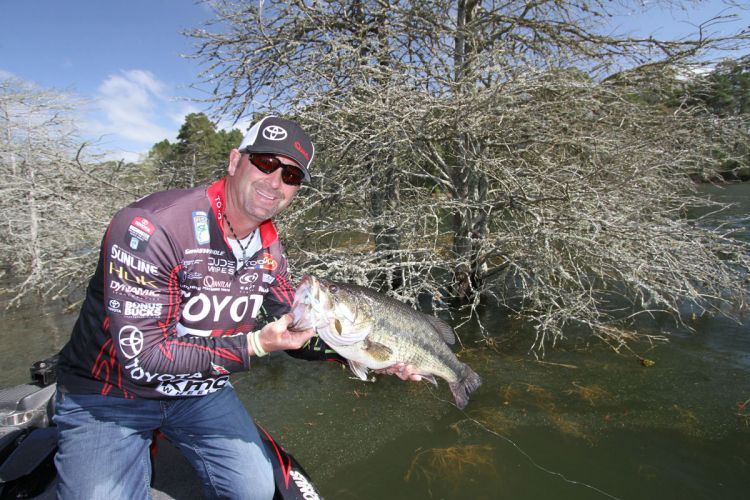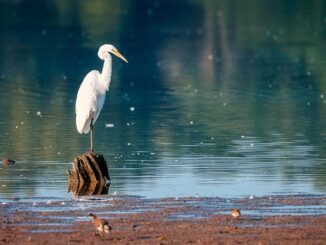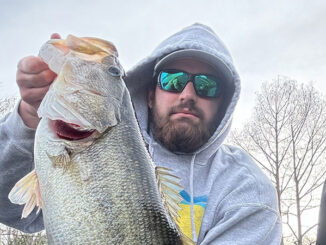What will this winter’s unseasonably cold temperatures mean for spawning action this month at Louisiana’s premier big-bass location?
Picture a chilled champagne bottle, shaken and gripped in a white napkin; the cork pops and out spews the bubbly. But after that initial blast, the remaining liquid settles and allows you to pour it out in measured elegance.
Given this winter’s severity so far, that’s kinda what we’re expecting at the state’s crown jewel of bass fishing — Toledo Bend.
Now, it would take another Ice Age to effectively halt the Bend’s spawning season, but in all likelihood, the extremely cold conditions that winter unleashed in January, at the very least, pumped the brakes on this annual parade of piscatorial procreation.
As of this writing, anglers were reporting some of the coldest temperatures seen in several years, but a lake that big — and one so packed with bass — will, no doubt, march forward with plenty of seasonal opportunity.
“We had some really cold water in the mid-40s, and it hadn’t been there for quite some time,” said Toledo Bend guide Dave Mansue. “Typically, when it’s like this, you’re going to have more prespawners, especially early in March, than you’re going to have spawners.
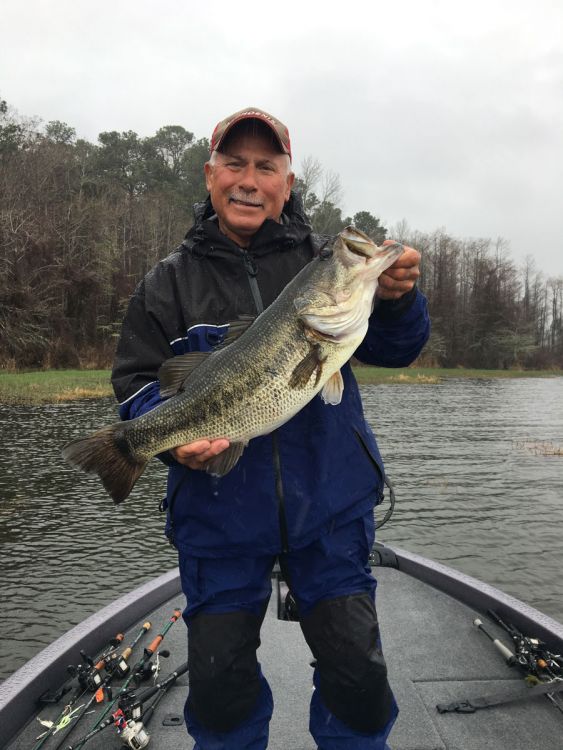
“Then, as the month progresses and things start to warm up, that’s going to transition into a full-blown spawn. Also, remember that Toledo Bend is so big and there are so many fish here, the spawn can take a very long time. But if March sees the combination of a warm front where the water temperature comes up pretty quickly and a full moon, you could see a major rush to the bank.”
Indeed, staging prespawners are anxious enough, but add some weather delays and those fish will be revving their engines. Once they feel nature’s cue, the ensuing toad fest could deliver what Mansue calls “an unbelievable time to be on the water.”
In the waiting room
For whatever level of prespawn activity March brings, Mansue likes a ¾-ounce football jig with a full skirt and a Zoom Ultra Vibe Speed Craw or Missile Baits Baby D-Bomb trailer. Another of Mansue’s prespawn tactics involves a Zoom Baby Brush Hog on a Carolina rig. Slowly dragging his baits across deeper points usually produces well.
“They like those points where they can come up quickly and get on the flat to stage and if it gets cold, they can drop back,” Mansue said. “They’re not looking for a long run up to the bank, they’re going to look for something that’s close to deep water. So, points near a spawning flat with deep water leading into it can be dynamite.”
Another good bet for hungry prespawners is one that many might scoff at — the Alabama rig. But think about it: Prespawners want to hang in a secure, comfortable area and pick off hefty meals without burning any more calories than they have to. Suffice it to say, the old “egg beater” fills that bill.
Mansue suggests running the A-rig through the ditches leading into spawning flats. Also, buzzing the outer edges of any remaining hay grass lines will put that rig in front of the gals with the green backs.
While the darker habitat of cypress trees presents an attractive scenario in the lake’s upper end, Bassmaster Elite pro Russ Lane’s a big fan of the hydrilla and milfoil flats in the midsection. Targeting the 4- to 8-foot depths, he’ll start with a crawfish or red Spro Fat Papa 70; a wide-body squarebill with a serious wobble like a spinnerbait.
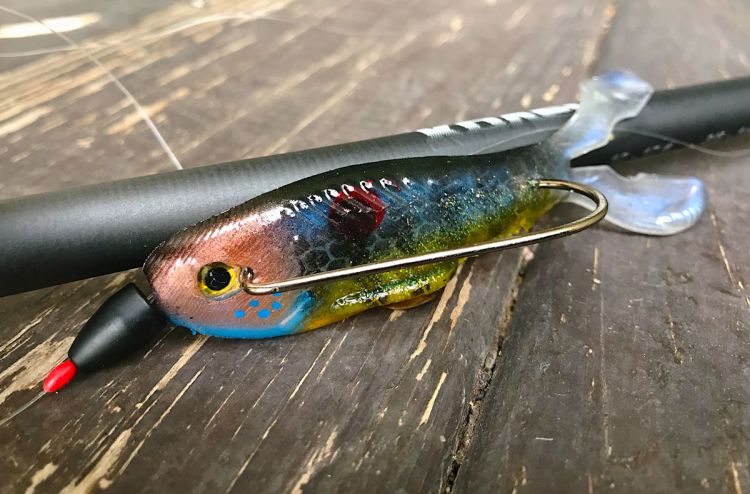
“You reel it slow and ‘hunt’ for grass,” Lane said. “When you reel it slowly, you feel that bait wobbling, your rod tip will be bouncing and when you find that grass, you reel it up slow and steady until your line gets tight and then you pull back on it. It’s just like ripping a lipless crankbait out of grass, only this bait gives you the larger profile that tends to get you the bigger bites.”
Now, that sounds exciting; but Lane said the fun often requires a significant investment. In short, you gotta put the time.
“Those fish, especially on grass beds, group up,” Lane said. “You may go for long stretches without a bite; you may want to give up. But you just haven’t gotten a bait in front of them. You just stick with it and it can happen really fast. I’ve gone for hours and caught nothing, but then caught them on four casts in a row.”
To facilitate the focus necessary for what can be a grinding chore, Lane follows a mental grid pattern to methodically cover large areas. A healthy grass bed outside a spawning area is almost certain to hold fish — it’s just a matter of who has the patience to find the sweet spot.
Noting a worthwhile payoff, Lane said: “Generally, when you find them on a place like that, you’ll have it all to yourself.”
Delivery room dynamics
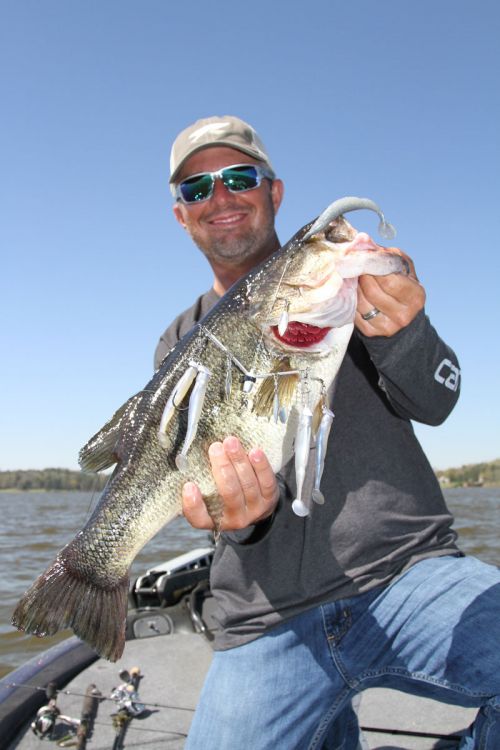
On a broad scale, Lane takes into consideration the top-down progression of this big lake’s spawn. With the deep, clear water in its lower dammed end and progressively shallower, muddier water dominating its upper reaches; Toledo Bend’s spawn typically begins up north where the earliest warming occurs and then sweeps southward.
Now, when conditions line up for that shoreward rush, bass will set up shop in spots that give their young’ns the best chance of survival. Mansue said that means protected pockets on the north shores, which get maximum sun and minimal wind.
Early on, Mansue expects to find beds in very shallow water, which heats up the quickest. Then, as warming trends extend cozy temps into progressively deeper water, he’ll look for fish on deeper beds.
“The shallower water allows more light penetration and more heat, so you’ll see them up there,” Mansue said. “But as that water temperature starts to rise, you’ll see those beds start to move off the bank. Now the water’s warmer at a deeper point, perhaps out in that 3- to 5-foot range. So, as the spawn progresses, they start to move off the bank because the conditions are safer in that deeper water.”
And don’t overlook any hay grass surviving in the shallow zones. Flipping into isolated holes often connects you with a bed fish that you’re not likely to see.
“Also, throwing a regular swimbait like a Keitech can be a killer approach,” Mansue added. “Because of the hay grass and the hydrilla, I throw it with a belly-weighted wide gap hook.”
Teasing tactics
Preferring a Texas-rigged Zoom Baby Brush Hog for his bed-fish duties, Mansue leans more toward natural colors like green pumpkin and watermelon for shallow bedders. Dipping the tails in chartreuse creates a flash of color that resembles a bluegill’s light green tail fin accents — signs of enemy activity for territorial bass.
Lane’s quick to say that his top choice for spawners is the Big Bite Baits Real Deal Shad — a hand-painted swimbait with a killer bream pattern. But if you’re envisioning him fan casting broad areas, think again. While swimming-style baits definitely have their place in this season (see Search Mode below), Lane has developed a straight-up switch-flipper.
“It was made to be an upright swimbait, but I Texas rig it with a hook in it sideways, instead of straight up and down, and just pitch it in the beds,” Lane said. “I’ve seen fish look at other baits and not be aggressive, but you pitch that thing in there and they blow up. They change color and just go crazy because it looks so real.”

Of course, prespawn and bed fish baits vary with preference and personal style, so find the ones that you’re comfortable with and keep ‘em wet. The good thing about March on Toledo Bend is that the cork pop is on the way, so get ready to toast some of the year’s best action.
Search mode
During that transitional time when fish are moving up, the last thing you want to do is go racing into shallow water ready to pitch beds. Fine if you’ve already found a few beds and know just where to go; but what if there are more new beds on your way in?
Good rule of thumb: Speed kills in the shallow spawning areas. Go slow and you’ll almost always do better. They key is to identify the productive areas and then stealthily work each one. Polarized sunglasses, a wide brim hat and a hooded sweatshirt or jersey help dial in your focus, but even before this stage of the operation, you can help yourself by fan casting likely areas with moving baits.
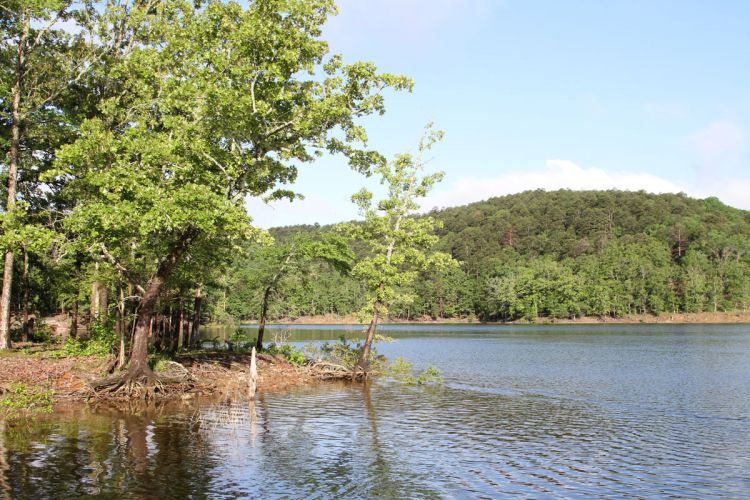 “Once the spawn starts to go, the swimbait is a great search tool,” said Toledo Bend guide Dave Mansue. “Many times, especially those fish that are spawning in deeper water, will feel that swimbait over the top of their head and they may not eat it, but they’ll come up and try to swat it away from their bed. Sometimes, that will tell you exactly where they’re at.”
“Once the spawn starts to go, the swimbait is a great search tool,” said Toledo Bend guide Dave Mansue. “Many times, especially those fish that are spawning in deeper water, will feel that swimbait over the top of their head and they may not eat it, but they’ll come up and try to swat it away from their bed. Sometimes, that will tell you exactly where they’re at.”
FLW Tour pro Pete Ponds likens it to the requisite stillness of squirrel hunting: He’ll set up shop in a promising area, drop his Power-Poles and plan on sitting and looking for upwards of 15 minutes. Once he spots a boil or push, he knows he’s close to fish on beds.
“If you get into a shallow flat, swimming a Texas-rigged YUM Lizard with a ¼-ounce weight is a good bait choice,” Ponds said. “Just throw it out there and look for movement. A lot of times you’ll see them ‘shark’ behind it.”
Drawing a strike is great, but simply irritating a fish enough to move can be just as valuable. Find one bedding fish, and you’ll almost always find several peppered along the same shoreline.
